[Plant nutrients] The 13 most important ones and how to know if your plants are missing or excess
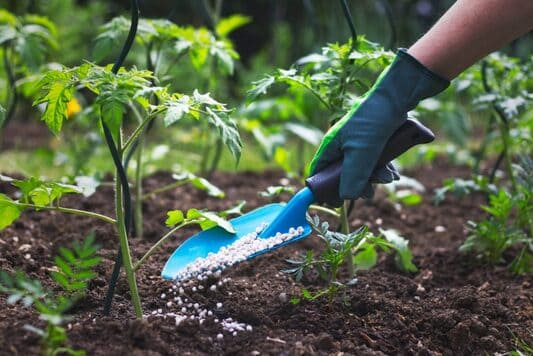
You probably already know how important it is to fertilize your plants regularly.
And you may even know the difference between nitrogen, phosphorus and potassium (the main nutrients in fertilizer), and what happens when you overdo it with one or underdo it with another.
But... did you know that for your plants to be healthy, up to 13 different nutrients are involved?
If you have too much or too little of one of them, it can cause your plants to lose vigor, or even get sick and die.
The problem is that it's not easy to understand:
- What those nutrients are and what the importance of each one is.
- How to know if your plants are deficient or in excess of any of them.
- The best way to prevent problems and that your plants are always healthy.
- Don't worry, because we are going to explain all that to you here.
And we are going to do it in the simplest way possible, so that you will be able to understand what your plants need even if you don't have a degree in chemistry.
Ready?
Here we go.
The 13 essential nutrients your plants need to be healthy (and what happens if there is a deficiency or excess of any of them)
Not all nutrients are equal.
Or rather: although all are important and necessary, there are some that the plant needs in much greater quantity than the rest.
Thus, from most to least we have:
- Major macro-nutrients.
- Secondary macronutrients.
- Micronutrients.
- We see them separately.
The 3 main macronutrients: nitrogen, phosphorus and potassium.
1. Nitrógeno (N)
Nitrogen is one of the essential nutrients used by the plant to develop.
It is vital for the generation of chlorophyll (the substance that gives the leaves their green color and allows them to photosynthesize).
If we have...
- Excess nitrogen: when we use a fertilizer very high in nitrogen, the plant develops many more leaves and stems, which also tend to have a very bright color (they are loaded with chlorophyll). The problem is that these leaves are very weak and sensitive to pests. In addition, it produces fewer flowers.
- Nitrogen deficiency: When it has little nitrogen, the leaves become duller or develop yellow lines. This makes them more vulnerable to disease and pest attacks.
2. Fósforo (P)
Phosphorus is one of the nutrients that the plant uses to develop flowers.
In addition, it also influences the growth of the root system, so the lack of this mineral will make the plant more sensitive to cold and drought.
If we have...
- Excess of phosphorus: this can block the absorption of some micronutrients (including iron or zinc), with the symptoms that this entails and that we will see later.
- Phosphorus deficiency: in addition to producing fewer flowers than normal (or not even blooming), it is common for purple tones to appear on the edges of the leaves.
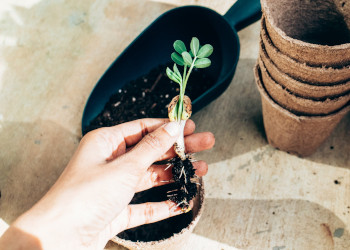
3. Potasio (K)
Together with phosphorus, potassium is an essential macronutrient for plants to flower and even to develop fruits.
Not only that, but it is also involved in several vital processes.
Its deficiency can leave it more vulnerable to pests, diseases and extreme weather conditions.
If we have...
- Excess potassium: like phosphorus, it can block the absorption of several micronutrients (which will weaken the plant).
- Potassium deficiency: it is very common for the edges of the leaves to turn yellow.
Secondary macronutrients: calcium, magnesium and sulfur
4. Calcium (Ca)
Calcium is a nutrient that is usually present in most soils (except in some more acid soils).
It is involved in the formation of plant tissues and root development, so its absence can cause weaker specimens to develop.
If we have...
- Excess calcium: it blocks the absorption of other nutrients such as phosphorus, iron or magnesium.
- Calcium deficiency: in the youngest shoots it is common to see yellow leaves and dry tips. It can also affect the development of fruits (which in many cases suffer malformations).
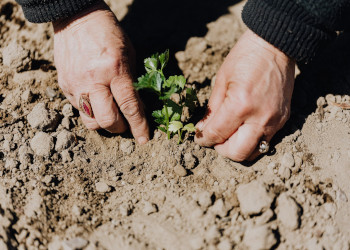
5. Magnesium (Mg)
Like nitrogen and sulfur, magnesium is involved in the production of chlorophyll.
Its absence can lead to the appearance of yellow streaks and spots, very similar to those caused by a lack of iron (although in smaller quantities).
If we have...
- Excess of magnesium: it can affect the absorption of potassium.
- Magnesium deficiency: yellow spots and edges appear on leaves.
6. Azufre (S)
This nutrient is essential for the formation of chlorophyll, as was the case with nitrogen and magnesium.
That is why its absence generates very similar symptoms.
If we have...
- Excess sulfur: it can cause toxicity (the edges of the leaves turn yellow and dry out). It can also affect nitrogen uptake. But this problem is very rare.
- Sulfur deficiency: more common than excess. As with nitrogen, sulfur deficiency causes yellow spots on the leaves.
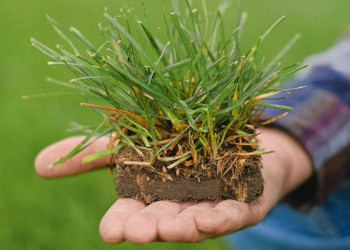
Micronutrients
7. Iron (Fe)
Surely you have heard the concept of "iron chlorosis". A disease characterized by the leaves turning yellow (except for the nerves, which remain green).
Well, the cause of this disease is precisely the lack of iron in our plants.
Although it is a micronutrient that does not need to be present in large quantities, it is also involved in the formation of chlorophyll.
Hence, its lack can cause major problems.
If we have...
- Excess of iron: very rare. It causes the appearance of brown spots on the leaves.
- Iron deficiency: its deficiency is more common in acid soils, and gives rise to iron chlorosis.
8. Zinc (Zn)
This micronutrient intervenes in the feeding process of the plant, besides making it more resistant to low temperatures.
If we have...
- Zinc excess: zinc excess is toxic for the plant, but it is very rare.
- Deficiency: plants grow slower (or stop growing altogether) and leaves turn yellow.
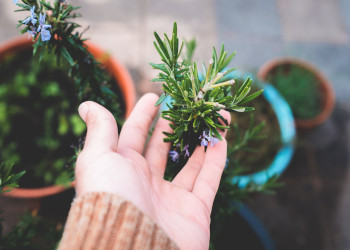
9. Manganeso (Mn)
Manganese is involved in several plant functions, including chlorophyll production.
If we have...
- Excess of manganese: it affects the photosynthesis process and causes the weakening of the plant. It is very rare, but can occur in soils with low calcium levels.
- Manganese deficiency: occurs more in alkaline soils. Its lack causes symptoms similar to iron chlorosis.
10. Boro (B)
Boron is an essential part of plant growth and seed production.
If we have:
- Boron excess: causes toxicity in plants, with symptoms similar to those of zinc or manganese excess.
- Boron deficiency: causes the plant to develop more slowly and even causes leaves to be born with deformations.
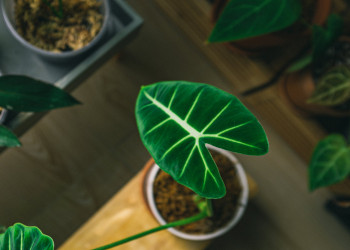
11. Cobre (Cu)
It is involved in different vital processes of the plant, including photosynthesis.
If we have...
- Copper excess: can occur in substrates with high pH. It causes toxicity (mainly affects vegetables).
- Copper deficiency: lack of copper causes plant deformations and symptoms such as iron chlorosis.
12. Molibdeno (Mo)
This mineral is associated with nitrogen, so the symptoms of molybdenum deficiency are similar to those of this macronutrient.
The good thing is that neither deficiency nor excess of molybdenum are common problems, because the minimum level a plant needs is very low.
If we have...
- Molybdenum excess: produces toxicity.
- Molybdenum deficiency: usually occurs in soils with low pH. Leaves develop yellow lines and spots.
13. Cloro (Cl)
It is involved in several vital plant processes. Fortunately, neither the lack nor the excess of this particular nutrient is usually a common problem.
- Excess of chlorine: it produces chlorosis and can even lead to leaf necrosis.
- Chlorine deficiency: is very rare. It is associated with yellow leaf margins and wilting.
How do I make sure my plants have the nutrients they need?
I'm sure you're thinking something like:
"But if they are a lot of nutrients, and on top of that the symptoms of many are similar. Do I really have to be attentive to all this?".
And the reality is that not necessarily.
It's good to know the symptoms and be aware of them so that if your plants start to develop them, you have an idea of how to fix them (e.g., trying specific nutrient chelates, lime amendments for calcium, etc.).
But in many cases, the best thing you can do is to make sure your plants are getting the right nutrients and soil conditions are correct.
Basically, the idea is prevention before cure.
To do this:
- Use an appropriate fertilizer: apply universal mixes or specific fertilizers depending on the specific needs of each plant.
- Control the pH of the soil: as with the fertilizer, each plant develops better in more alkaline or more acidic soils (such as acidophilic plants). If you plant them in the garden, be sure to control the pH to prevent this from interfering with nutrient uptake.
- Soil mineral mix: use nutrient-rich substrates that meet the specific needs of each species.
If you comply with these three rules, your plants will usually grow healthy.
And if not...
If you have doubts about the nutrients your plants need, we can give you a hand.
In Viveros Gonzalez we have been working hand in hand with gardening and plant lovers for many years.
That is why we have a pretty clear idea of the needs that each species may have and how to make it grow healthy and without problems.
If you need it, you can contact us by clicking here and explain us your case so we can advise you.
You just focus on enjoying your garden and we will take care of the macronutrients and micronutrients.

 English
English Spanish
Spanish